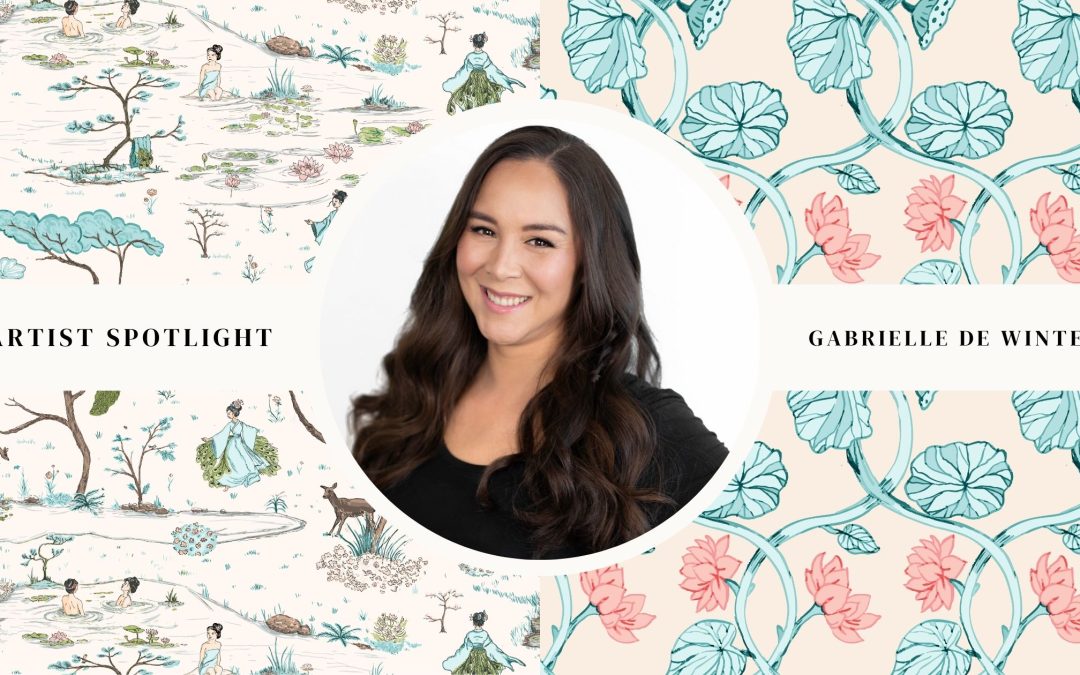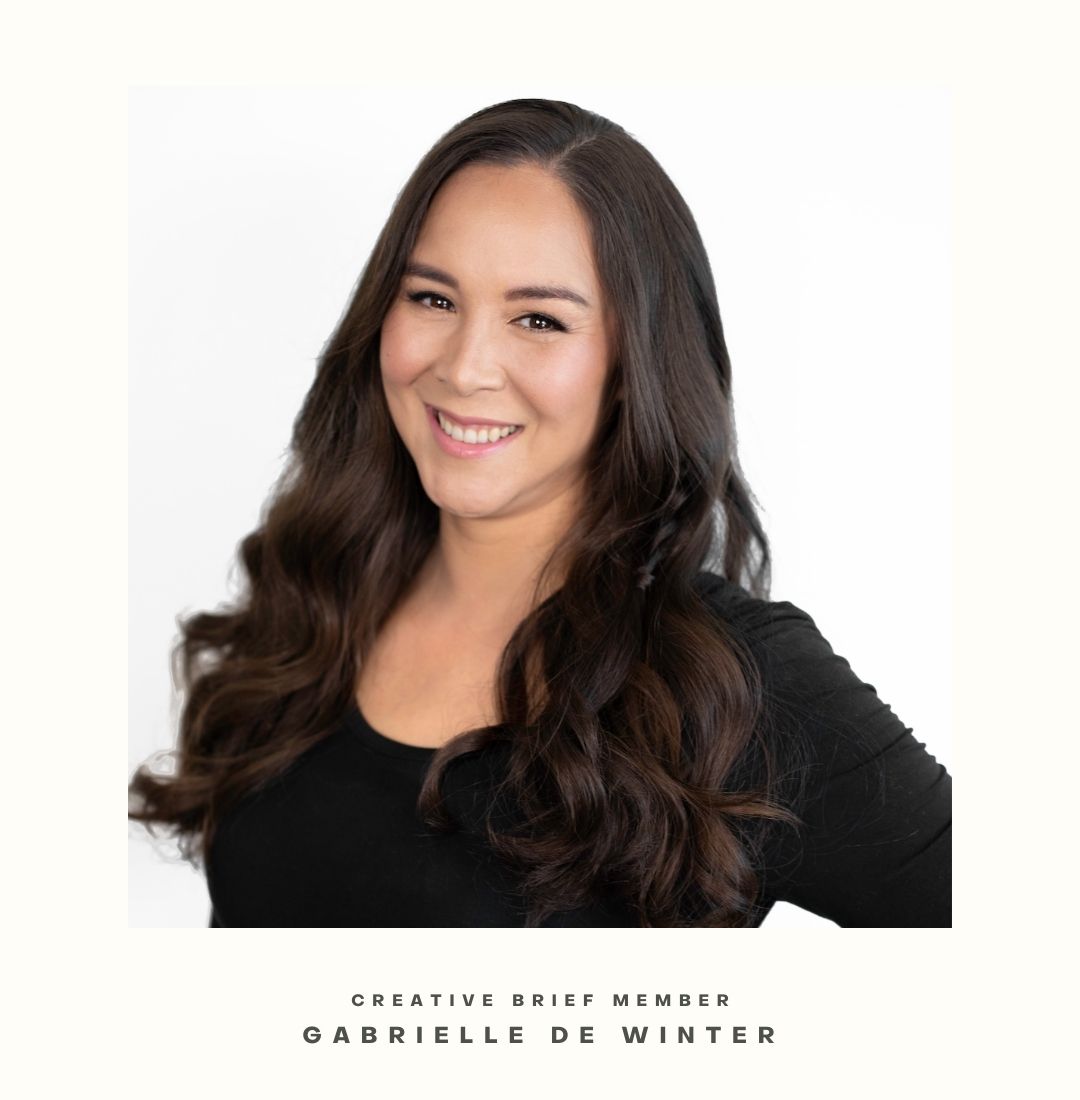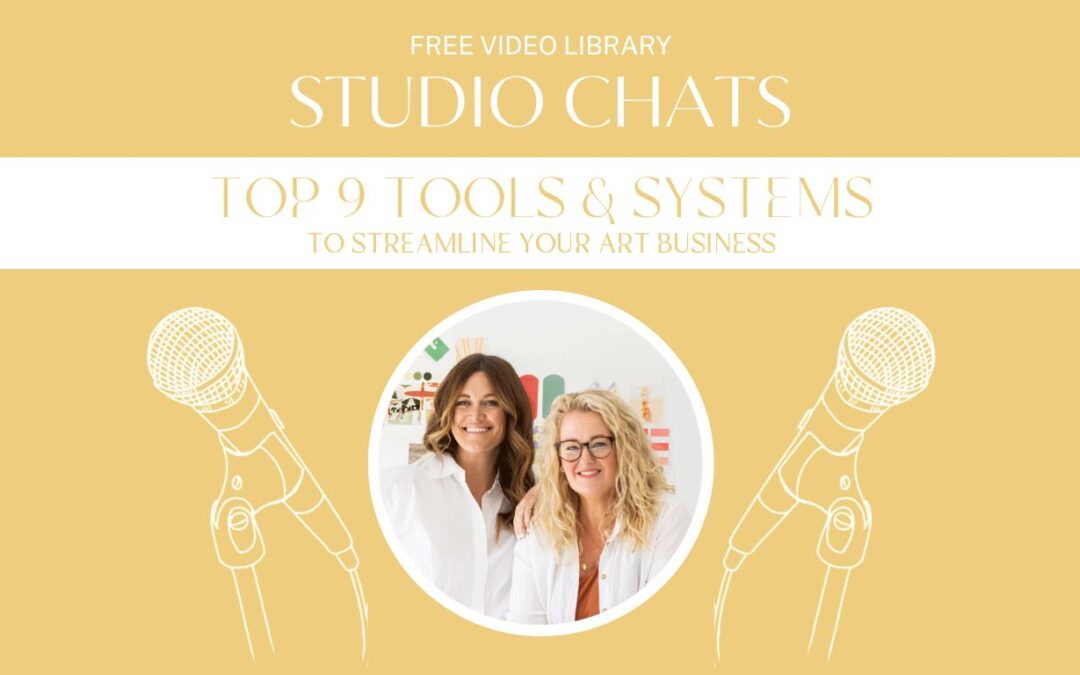
Creative Brief Member Spotlight – Gabrielle De Winter
Creative Brief Member Spotlight
We love spotlighting our Creative Brief Members!
Artist Spotlight – Gabrielle De Winter
Gabrielle De Winter Designs
Gabrielle is a lifelong artist and creator, starting from making mud pies and beaded jewellery to exploring printmaking, drawing, watercolour, creative writing, and silversmithing.
In 2006 she completed the Langara Fine Arts program in Vancouver, and her passion for art has never wavered since. She discovered her love for surface pattern design and completed the Immersion Course with Bonnie Christine in 2023.
Her creative inspiration stems from her children, her shared love for nature, thrifting, and the creative process. She firmly believe that the key difference between being an artist and not is the execution of ideas. No matter how brilliant an idea may be, it must be brought to life through creation.
My Journey Into Pattern Design…
Gabrielle had just finished writing a fantasy adventure story for her children and was dreaming up ways to illustrate it herself. While exploring ideas, she stumbled upon an ad for the Immersion Course; and that’s when she discovered the world of surface design.
As a child, she had always imagined designing stickers and wallpaper when she grew up, but it wasn’t until she watched one some simple introduction videos that everything suddenly clicked. From that moment on, she was hooked; and she’s been “doing one thing a day” since June 2023.
My Creative Process…
Gabrielle creates beautifully hand-drawn, analog repeating patterns: all starting with the simple tools of pencil and paper.
She begins by thoughtfully planning her designs on paper, sketching out each motif with care. Using her lightbox, she then brings those sketches to life in ink, marker or watercolour before scanning them and refining everything digitally.
With the help of Adobe Illustrator, she transforms her hand-drawn artwork into vectored seamless, polished repeating patterns.
Why I love the Briefs…
I love the Creative Briefs from the Creative Studio because they’re like a treasure map; clear enough to guide you, but open enough to make the adventure your own.
Plus, they save me from staring at a blank page wondering if caffeine counts as a creative strategy.
My Tip Tips…
My biggest secret weapon is my SPD buddy, Davie Pocstar. She is my ride or die and the one who told me to join Creative Studio. She is my accountability partner and we will give each other constructive feedback and check-ins daily.
Being an independent artist doesn’t have to be lonely. My advice is to get yourself a Davie, if you haven’t yet.
Its okay to be vulnerable, and put yourself out there to connect and find these friendships and partnerships that keep us going.
Want to see more of Gabrielle's work?
Click HereWe love hearing from & spotlighting our Portfolio Building Creative Brief members!
If you are a member & would love to be featured submit below.















